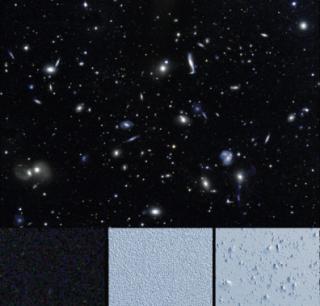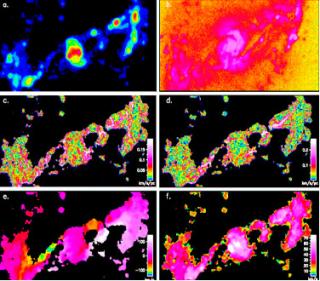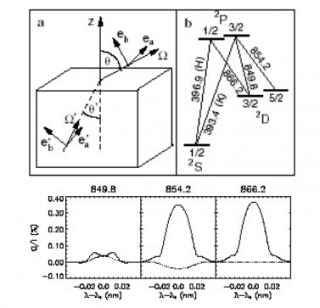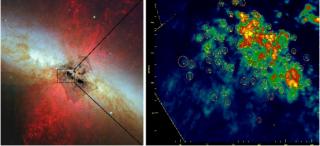La estrella, que experimenta este tipo de explosiones cada cincuenta años, perdió en el último estallido una masa equivalente al 10% de la masa del Sol
This section includes scientific and technological news from the IAC and its Observatories, as well as press releases on scientific and technological results, astronomical events, educational projects, outreach activities and institutional events.
-
Advertised on
-

Ref 1: X1822-3711 | Ref 2: GX339-4 Detecting companion stars in these systems has been impossible until now. Thanks to a new technique developed at the IAC, they can now be detected through fluorescent CII/NIII emissions produced by X ray irradiation.
Advertised on -

Using the Surface Brightness Fluctuation technique (SBF), IAC researchers have succeeded in detecting galaxies beyond Hubble's photometric detection limit. These new detections are fundamental for obtaining accurate information about the number of weak galaxies. This number is vital for Cosmology and for the theory of galaxy formation and evolution.
Advertised on -

Tests have been carried out for the first time on the hypothesis that the structure of interstellar dust around galactic bars is determined by the velocity field of the gas. The dust is found in regions delineated by high gas speed gradients, something which had been proposed but not observed. The gradients themselves seem to be related to intense star-forming regions.
Advertised on -

The linear polarization produced by scattering processes in the spectral lines of the IR triplet of Ca II can be observed near the edge of the solar disk. The cause of this polarization was considered a true enigma until the year 2003, in which IAC researchers could carry out sophisticated calculations based on the quantum theory of the spectral line polarization. In this way, they could demonstrate that the physical origin of the enigmatic polarization is the presence of "atomic polarization" in the lower levels of such spectral lines, which produces dichroism (i.e., selective absorption of
Advertised on -

Galactic superwinds present a filament-like structure, with strong X ray emissions, which could not be explained until now. Using hydrodynamic calculations, it has been possible to determine that this structure is caused by the autocollimation of the material that forms the galactic superwinds. The autocollimation is caused by the interaction of material escaping from stellar superclouds, compact groups of stars revealed by the HST in which intense stellar formation has given rise to at least 100 very massive and very luminous stars. This interaction also explains the X ray emission.
Advertised on